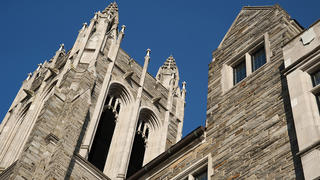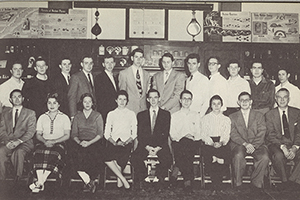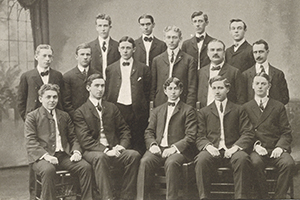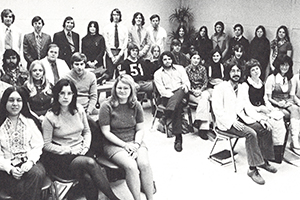Student Orgs Aim to Offer a Helping Hand

Editor's note: This article was written prior to University of the Sciences' merger with and into Saint Joseph's University and does not reflect the current, combined institution. References to programs, offices, colleges, employees, etc., may be historical information.
 The earliest records of student organizations date as far back as 1899, the oldest yearbook in the University Archives. All sorts of clubs spring up in these yearbooks, most of them representative of a regional area, like the Jersey Club or the Southern Club, but others included the Mandolin and Guitar Club, Skull and Bones, and The Bachelor’s Club, which “attended to the social welfare of its members,” according to a summary in the 1899 yearbook.
The earliest records of student organizations date as far back as 1899, the oldest yearbook in the University Archives. All sorts of clubs spring up in these yearbooks, most of them representative of a regional area, like the Jersey Club or the Southern Club, but others included the Mandolin and Guitar Club, Skull and Bones, and The Bachelor’s Club, which “attended to the social welfare of its members,” according to a summary in the 1899 yearbook.
The objective of several clubs is described: to bring students together “in closer communication so that in one another a warm welcome hand may always be found ever ready and willing to help over the paths of difficulties that arise during the college career.”
 As the years went on there became a more specific focus on academic organizations, the creation of a Student Council, and cultural organizations. By the 1950s there were official branches representing the American Pharmaceutical Association and American Chemical Society, and religious organizations including Hillel, Neuman Club, and a Latin-American Club.
As the years went on there became a more specific focus on academic organizations, the creation of a Student Council, and cultural organizations. By the 1950s there were official branches representing the American Pharmaceutical Association and American Chemical Society, and religious organizations including Hillel, Neuman Club, and a Latin-American Club.
The origins of Greek Organizations are less clear.
An ad hoc group called Zeta Phi was likely established in 1854 as an ephemeral organization for the benefit of the senior class. While Zeta Phi was in a constant state of flux -- dissolving and renewing itself with each class of students -- it wasn’t a fraternity in the way we think of them today. It is generally regarded as a precursor to the Alumni Association which was established in 1864. A similar organization for students in the Junior class was called Beta Phi Society.
 By the 1920s, Fraternities and Sororities with national ties were established on campus including Kappa Psi and Upsilon Sigma Phi. In 1947, an Interfraternity council was formed to promote the cooperation and fellowship of the fraternities and sororities. Organizations like Phi Delta Chi, which is still active on campus today, focus specifically on pharmacy and pharmacy professionalism. Pi Lambda Phi was established in 1969 as the first non-sectarian social fraternity and began charitable outreach, hosted events, and had a “little sister” organization to complement the fraternity.
By the 1920s, Fraternities and Sororities with national ties were established on campus including Kappa Psi and Upsilon Sigma Phi. In 1947, an Interfraternity council was formed to promote the cooperation and fellowship of the fraternities and sororities. Organizations like Phi Delta Chi, which is still active on campus today, focus specifically on pharmacy and pharmacy professionalism. Pi Lambda Phi was established in 1969 as the first non-sectarian social fraternity and began charitable outreach, hosted events, and had a “little sister” organization to complement the fraternity.
Today, the University has a vibrant culture including more than 60 student clubs and organizations and 11 fraternities and sororities.
